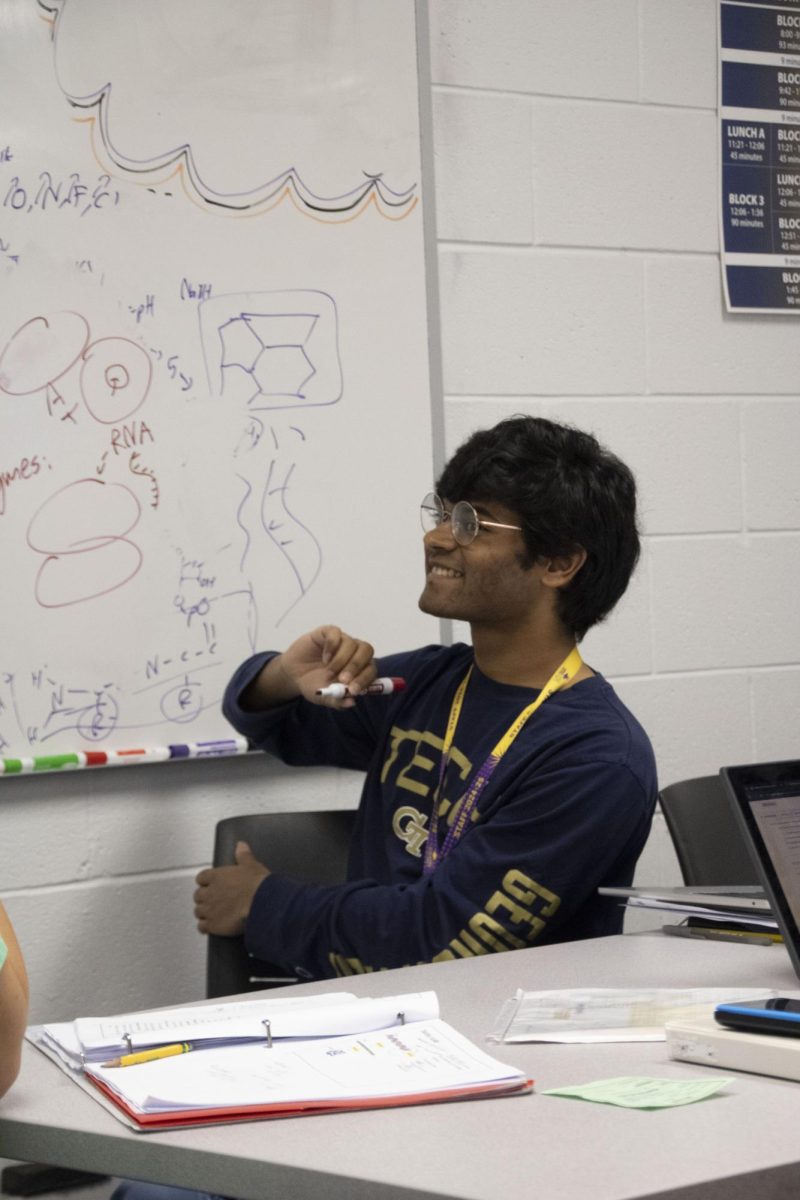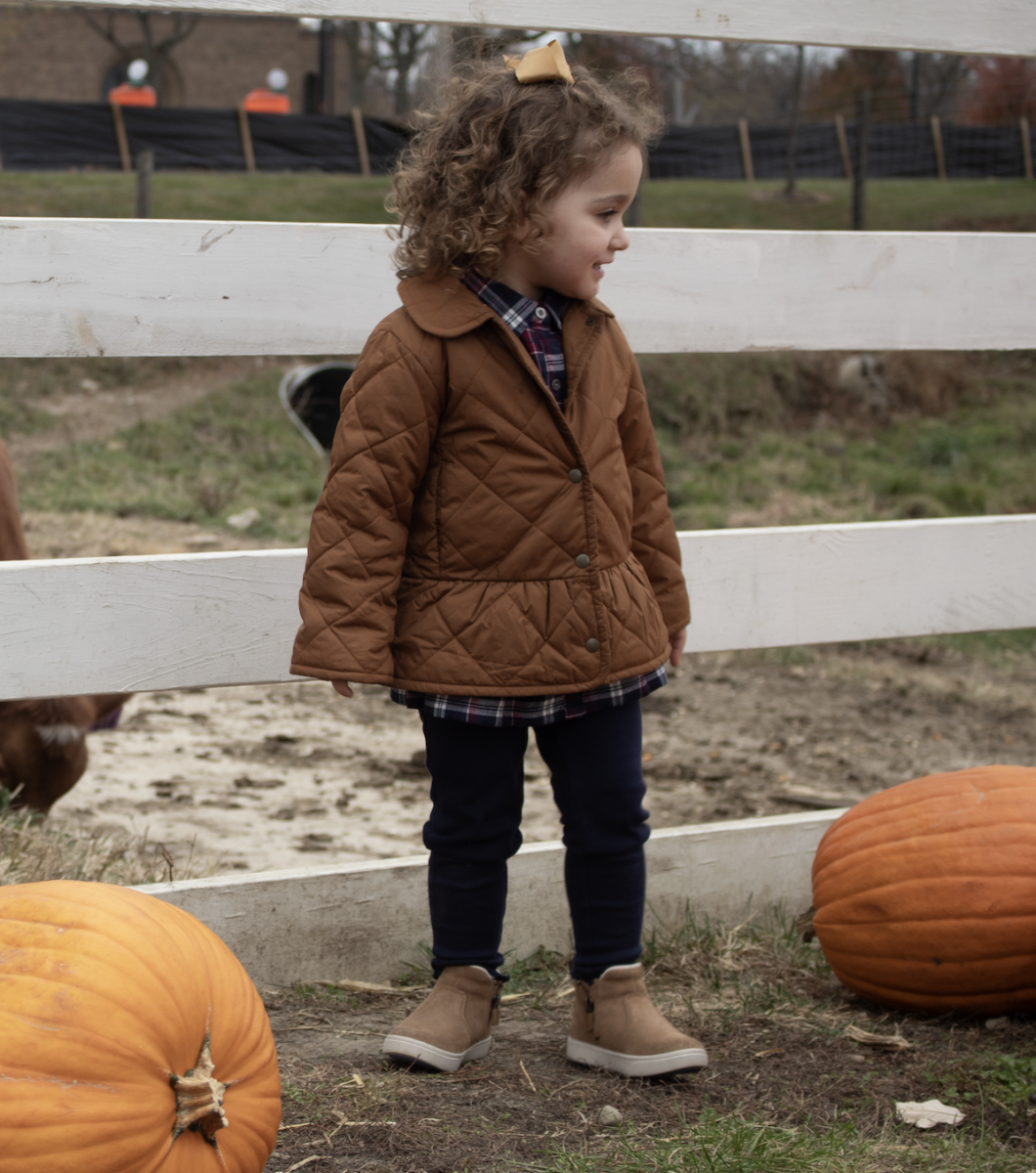As soon as the passing period bell rings, students flood out of their classrooms, pouring into the hallways. Immediately a rush of chattering voices fill the air. Some are leaving their language classes, discussing difficult assignments and grammar struggles. However, for some South students, a second language has been an effortless part of their daily lives beyond the classroom walls.
Senior Martina Dragoytchev comes from a Bulgarian family. As a child, she grew up speaking both English and Bulgarian, and juggling the customs of both cultures.
“When I was at school, I learned English,” Dragoytchev said. “[At home,] I spoke Bulgarian. My mother, father and sister were born in Bulgaria, while I was born [in the U.S.]. They wanted me to know the language.”
Being the only one born in the U.S, Dragoytchev felt she bridged the gap between societies by being able to communicate with her family and speaking the same language. Dragoytchev noted that her family had also influenced her: they tie culture and language together in an effort to bring Dragoytchev closer to her Bulgarian heritage.
“Culturally, [my family] wanted to focus on the food and the customs that we had,” Dragoytchev said.“We have name days where you celebrate your name. I have my own day in March, which is the month of Marta, and my name falls within that month. We celebrate it like a birthday party.”
Growing up with different customs can sometimes lead to a culture shock, according to Dragoytchev. Having grown up with both cultures from her childhood, the lines that separated them sometimes blurred and made Dragoytchev aware of the difference in values upheld by each country.
“We have this [tradition] where we wear red and white in March, because March is a lucky month,” Dragoytchev said.“I’d wear a red and white bracelet to school and I never realized that nobody else did that.”
Similarly, sophomore Shahnoor Shahzad said she feels she can relate to this. Shahzad was born in Pakistan and came to America when she was 12. Her family speaks Urdu as well as Punjabi, and her siblings speak English.
“At home we wear traditional clothes, and our house is way different than [other] households,” Shahzad said. “We have a lot of prayer rugs, because that’s just our culture.”
Shahzad’s mother tongue, the first language she learned, was Urdu, and English was a secondary subject that she learned in school. However, no school can teach the casual slang and societal rituals that natural English speakers learn as a child, and that was what surprised Shahzad the most.
“The hardest part [of learning English] was [learning] the cultural norms,” Shahzad said. “One time I said a bad word in class, and I got kicked out. In Pakistan it wasn’t a bad word, so I didn’t [know better].”
Shahzad and Dragotychev have another similarity: both of their families left their respective homelands, searching for a new life in America. According to Shahzad, it’s rarely easy and she empathizes with immigrants who come to America.
“[Whenever] I hear other languages, I start reminiscing and I feel like I should help them,” Shahzad said. “ I love learning other languages.”
Students and language teachers are not the only ones with a bilingual family history. Photography teacher Amie Elliott detailed her family’s history and their migration from Austria to America during World War II.
“When they came to America, they wanted to be 100 percent American citizens,” Elliott said. “My dad and his brothers worked hard not to have an accent. So when my dad had his own children, it was never a priority to speak another language.”
Society was much less tolerant of bilingual speakers during this time, Elliott said. Speaking from her own experiences, Elliot said for the children of these immigrant workers, [being bilingual was difficult and] caused a lot of regret.
“I don’t think it was until me and my sister were in our 20s, that we figured out it [would be cool] to speak Russian,” Elliott said. “It wasn’t anywhere else, and we felt like we were the only ones.”
Elliott has witnessed a changed in society as the years progressed. She cites the numerous cultural clubs at GBS as a testimony to the rise in tolerance. The way students react to their cultures has changed as well, she explained.
“A lot of students are going to [religious] schools and are no longer feeling embarrassed but [rather] prideful of their culture,” Elliott said. “The world is so much more connected now. It’s still a large part of people’s lives.”





